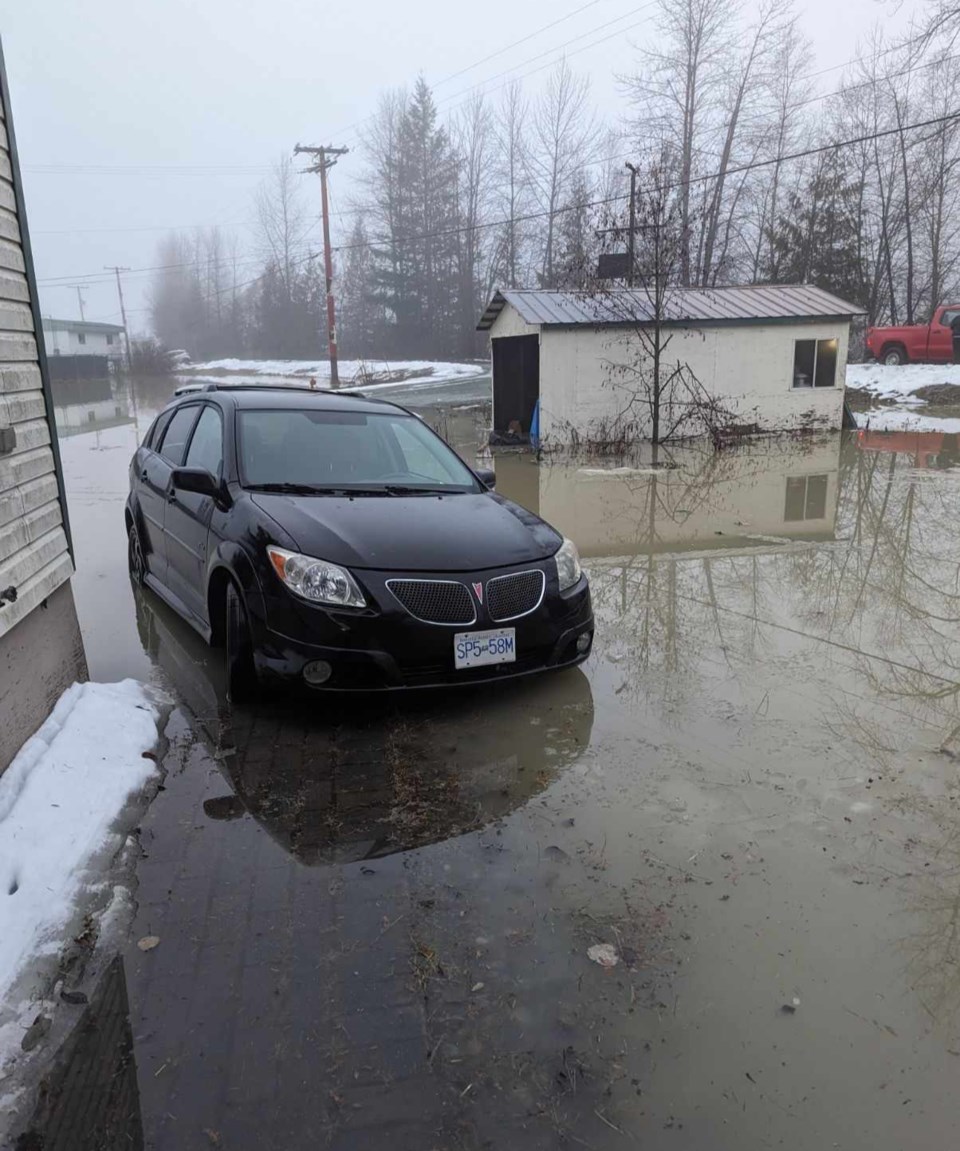The Village of Pemberton (VOP) is working with the Pemberton Valley Dyking District (PVDD) to improve the community’s ability to handle flooding. Officials hope to reduce the need for evacuations in the future as the community continues to grow.
At a committee of the whole meeting on Tuesday, June 18, council supported an application to the Community Emergency Preparedness Fund administered by the Union of British Columbia Municipalities on behalf of the PVDD for funding of the proposed Arn Canal Pumping Station.
PVDD's operations and maintenance manager, Kevin Clark, provided background information about the Arn Canal, drainage passes and creeks, and presented the plan for the proposed pumping station.
He highlighted the goals of the pump installation, which include: Eliminating the need to evacuate some of areas of the village during a low to moderate high-water event; protecting farmland; allowing future development to use the Arn Canal as a drainage path; and avoiding the transfer of risk from future VOP developments to properties in the Squamish-Lillooet Regional District (SLRD) or to existing structures in the Village.
The VOP declared a state of local emergency on Jan. 30 due to flooding, and many locals were displaced from their homes due to an evacuation order on Airport Road.
The SLRD later issued an evacuation alert for 33 properties in Area C, citing "potential danger to life and safety."
At a council meeting on Tuesday, Feb. 13, Mayor Mike Richman said the Pemberton Creek Bridge poses a great weakness, adding he worries Pemberton residents only have one road to use to get out of the village during an evacuation order.
He said Pemberton got lucky in January, but that shouldn’t be a reason for people to ignore evacuation orders or alerts in the future.
Clark explained why the Arn Canal Pumping Station is needed now.
“When the dikes were originally built, it really messed up the drainage of Pemberton,” he said. “All the natural drainage was covered by dikes. Pemberton became like a swimming pool. There are only four ways for water to get out of the area from this side of the mountain all the way to the Highway 99 bridge. A couple of times a year, Two Mile Creek comes back to life and we get an event.”
The expert referenced 1984’s flooding event as an example. He stressed that all development and redevelopment can increase the risk of flooding in Pemberton and neighbouring communities. “You have to be cognizant of what you are doing to your neighbour,” said Clark.
The operations and maintenance manager has seen his fair share of once-in-a-lifetime weather events since he took the reins.
“Since I started in 2020, we have had several evacuations,” he said. “In low to medium events, there wouldn’t be a need for evacuations because the pump would pump the excess flow. We don’t need to pump the whole canal. We just have to pump some of the canal.”
Clark added Pemberton will need the pumps over the next 20 years. “When we need pumps, everyone else does, too,” he said. “We run out of people to call to get a pump.”
Benefits of building the pumping station include: building trust with the community, de-watering faster to reach the post-flood recovery phase quicker, reducing the need to remove river sediment from Pemberton Creek, reducing the transfer of risk from Village developments, and mitigating risk from future Lillooet River aggradation from the Meager slide.
The PVDD is not eligible to apply for funding under the Community Emergency Preparedness Fund administered by the Union of British Columbia Municipalities. Therefore, Clark requested support from the VOP, which would submit the application and would own the infrastructure. The PVDD will allocate $35,000 from project reserve funds for preliminary engineering, and its offiicals will also collaborate with staff to prepare the application, manage the project, deliver the final report, and ensure financial accuracy.
Councillor Ted Craddock asked if a second and third pump might be needed in the future, and what the cost of the first phase is estiamted to be.
Clark estimated the first phase would cost between $1.2 and 1.8 million. He stressed this would make later phases easier. “We are going to sit around the table and decide on the pump size based on the data that we have,” said Clark. “We will proof-test it for one or two years.” PVDD would then use what they have learned from the first phase to start the second phase.
Richman asked if different parties would own different pumps in terms of management.
“It is a valid point and it will be part of a bigger conversation between the diking district and the regional district," Clark said. "Water doesn’t care about districts.”
CAO Elizabeth Tracy noted the measures will be needed as the community continues to grow.




